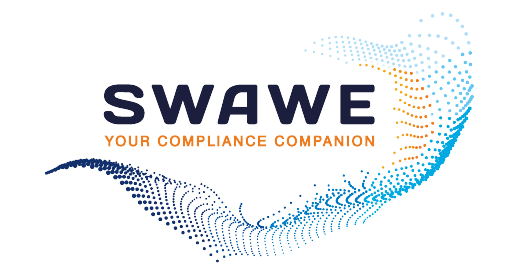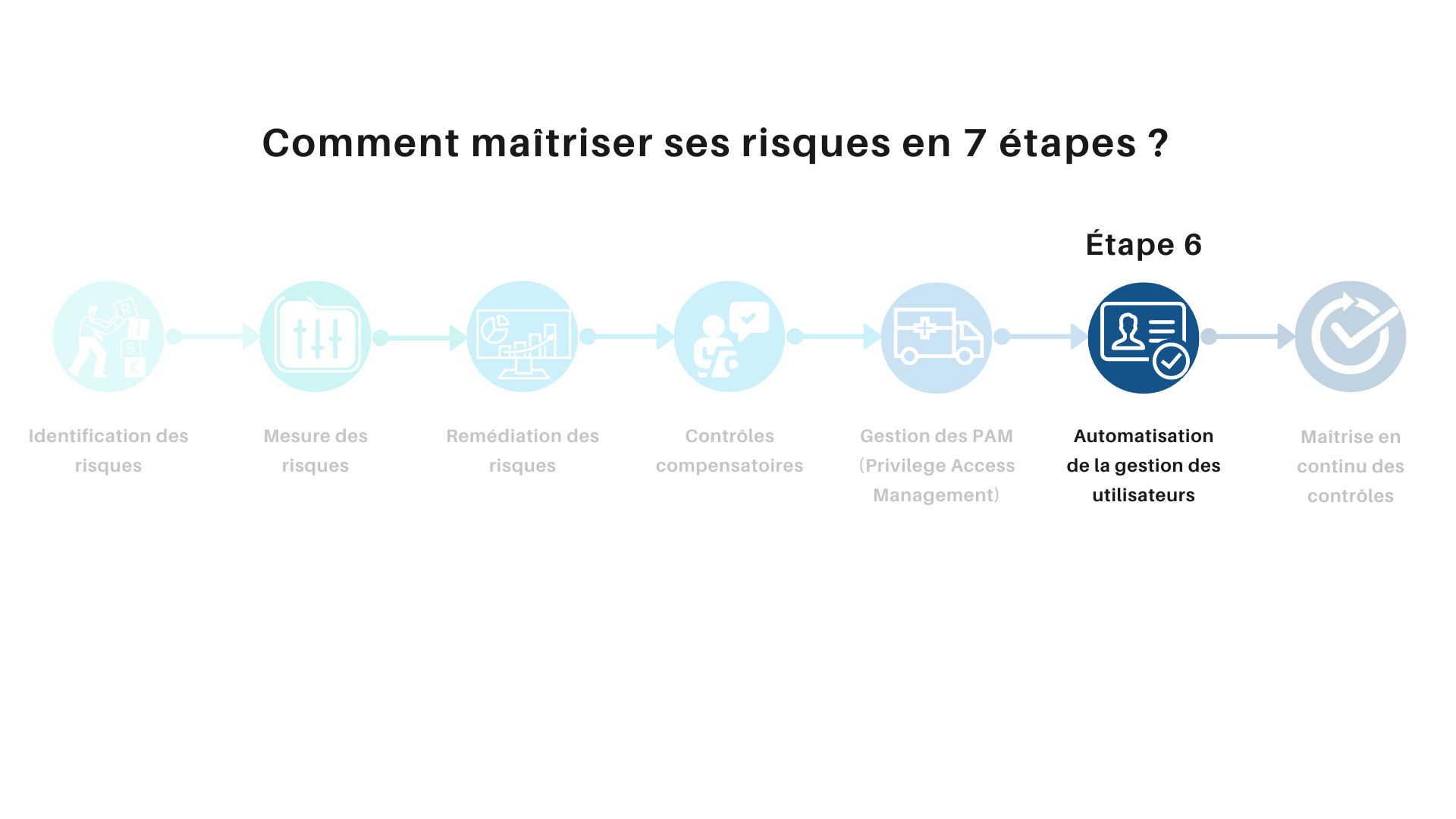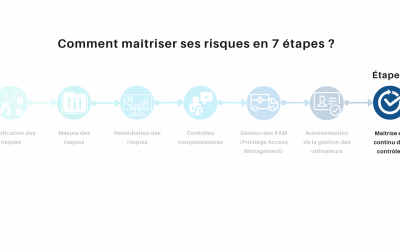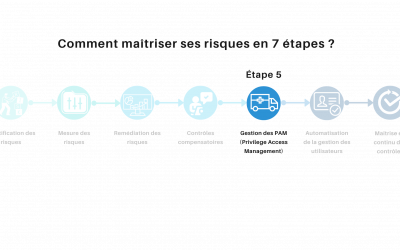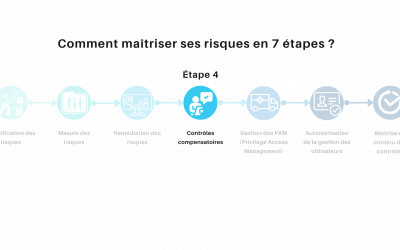L’objectif principal de l’IAM est de gérer de manière centralisée les identités des utilisateurs (employés, clients, partenaires, etc.) et de contrôler leur accès aux systèmes, applications, données et autres ressources.
Les principales composantes de l’IAM incluent l’authentification (vérification de l’identité des utilisateurs), l’autorisation (détermination des privilèges d’accès) et la gestion des identités (création, modification et suppression des comptes d’utilisateurs).

How does it work?
The SWAWE IAM identity management module allows you to define an organization, Business Profiles (groupings of rights in the various connected remote systems) and automate the management of the user lifecycle.
It is in an automated, centralized and secure way that identities are managed in the various connected systems.
Nos clients apprécient tout particulièrement l’intégration avec leurs outils existants, regardez l’illustration ci-dessous
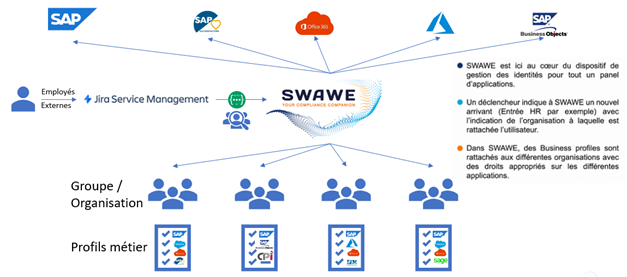
Bénéfices :
Une solution IAM (Identity and Access Management), également connue sous le nom de gestion des identités et des accès, offre de nombreux avantages pour les organisations, en particulier dans un monde de plus en plus axé sur la sécurité et la gestion des données. Voici quelques-uns des principaux bénéfices d’une solution IAM :
Sécurité renforcée :
Contrôle des accès : SWAWE permet de définir de manière précise qui a accès à quelles applications/ autorisations.
Gestion centralisée des identités :
SWAWE centralise la gestion des utilisateurs et des droits d’accès, ce qui simplifie la gestion des comptes et des autorisations à travers l’ensemble de l’organisation.
Conformité aux réglementations :
SWAWE aide les organisations à se conformer aux réglementations en matière de sécurité des données et de confidentialité.
Réduction des risques :
Critical risk analysis or SOD can be done at any time in SWAWE. In the project or maintenance phase, it is sometimes useful to be able to simulate changes in rights assignments to know the impacts on risks, without actually assigning the rights. It is a preventive risk analysis.
Productivité améliorée :
SWAWE simplifie la gestion des utilisateurs, ce qui permet aux équipes informatiques de gagner du temps et de se concentrer sur des tâches plus stratégiques.
Gestion des cycles de vie des comptes :
SWAWE automatise la création, la modification et la désactivation des comptes utilisateur, ce qui facilite la gestion des comptes utilisateurs tout au long de leur cycle de vie au sein de l’organisation.
Visibilité et audit :
SWAWE allows you to store and log all actions related to identity management and application rights assignment. The automation of the various processes parameterized in the IAM guarantees the quality and compliance of the information contained therein.
En résumé, SWAWE IAM est essentielle pour renforcer la sécurité, simplifier la gestion des identités et des accès, garantir la conformité aux réglementations et améliorer la productivité au sein d’une organisation.
Fonctionnalités :
Identity Management Automation
Managing and controlling the user lifecycle is often difficult because most of the time processes are done "manually" without a tool that centralizes and automates processes related to application security. SWAWE enables this automation by ensuring compliance with the approval, traceability and segregation of duties process.
Preventive risk analysis
Critical risk analysis or SOD can be done at any time in SWAWE. In the project or maintenance phase, it is sometimes useful to be able to simulate changes in rights assignments to know the impacts on risks, without actually assigning the rights. It is a preventive risk analysis.
Customizable approval workflow
To comply with best practices, it is necessary to set up a validation process when creating or updating the user file. Workflows can be defined at different levels: during the validation of the request by a manager (in connection with the attachment of the beneficiary to an organization), during the validation by a process owner risks the SoD analyses, during a validation by an additional interlocutor to complete / validate the initial request ...
Integration with your existing tools
SWAWE can be used independently, but it can also be integrated into the mapping of existing company applications. This prevents the company from multiplying its applications and thus maintaining a tool that centralizes its identities and associated application rights. Interactions from a technical point of view between the company application and SWAWE take place via APIs.
Custom reports and dashboards
SWAWE has by default a set of tables that allow you to create dashboards or reports according to the needs of the company. In the context of IAM, we can, for example, set up reports on active/inactive accounts, on the types of users, on new risks that appeared during the last creations, or create detailed lists with the use of transactions or with the details of risks or with the name of the associated business rights...
Materialization of evidence for auditors
SWAWE allows you to store and log all actions related to identity management and application rights assignment. From the request to create a user to the provisioning of it in the system, all information is traced and historized, and therefore auditable.
